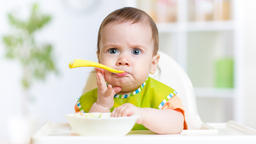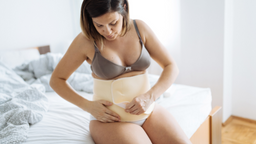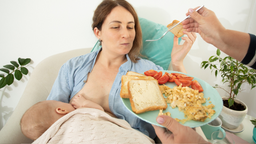
Don’t worry, you’re not going crazy, and your hair isn’t falling out as a result. Postpartum hair loss is normal — and temporary — so if you start to see that you are “shedding” more than usual in postpartum, there is a reason for it.
To understand postpartum hair loss, we must first understand the natural life cycle of human hair. Your hair is constantly undergoing a cycle of growth, rest, and regrowth. This cycle means that right now, at this very moment, the individual pieces of hair on your head are going through their own growth cycle. During significant hormonal changes, this cycle can be altered and cause more individual hairs to enter the same cycle.
Hair Cycle:
- Growth
- Rest (Shedding)
- Regrowth
Postpartum hair loss has a direct correlation to the hormonal changes mothers undergo during pregnancy and postpartum. During pregnancy, hormonal changes can stimulate an increase in the percentage of hairs in the growth phase. When more hairs are in the growth phase at once, you may benefit from a thicker and fuller head of hair. That is why you may have heard that women who are pregnant have a phase of excellent-looking hair.
But, as pregnancy ends, so does the cycle of your hair follicles. When your hair moves from the growth phase to the resting phase, this will typically lead to shedding. Remember, since much of your hair moved to the same cycle during your pregnancy, that means that you are likely to shed much more than usual. Your hair will typically start to shed around three months after birth.
KellyMom.com has an excellent excerpt for calculating how long the shedding will last for:
“The amount of time between childbirth and the onset of shedding corresponds to the length of the resting phase of hair growth (between 1 and 6 months, with an average of three months). The hair loss can seem more extreme if your hair grew much more than normal during pregnancy, or if you have long hair. Most women will return to their usual hair growth cycle within six months, or between 6 and 12 months after birth.”
With this calculation, you should expect the shedding to stop anytime from 6-12 months after birth. If your hair loss continues after 12 months, you may have to consult a medical professional.
Eventually, you will begin to see that you are no longer shedding as much — this means your hair has entered in the regrowth phase. During this time, as the title of the phase suggests, your hair should regrow back to the way it was before you became pregnant. Of course, this process isn’t guaranteed, nor is it fast. It may be a few months before you see evident results that your hair is growing back.
Okay, so I know why my hair is falling out, but what can I do about postpartum hair loss?
Now that you know why you are losing so much hair, you may need advice for your resting phase. During postpartum, your hair can “fall out” at a much faster rate than you are used to.
While your hair is in the resting phase, here are some things you need to do:
Get a Shower Catch
During the resting phase, your hair is likely to shed. To save your home plumbing system, investing in a shower catch, or screen, can help stop your hair from clogging your drain. Protecting your drain from the amount of hair you are likely to shed will not only save you time, but it will keep your plumbing running smoothly.
Get a Roller Brush
The more hair you lose, the more likely a roller brush will be your new best friend. The sticky adhesive on the brush will allow you to catch single strands of hair on your clothes before you leave your house.
Get a Haircut
During the few months you might be shedding, you may benefit from a good haircut. Many moms choose shorter haircuts to manage their hair loss.
Use a High-Quality Shampoo & Conditioner
Regardless of postpartum hair loss, you should always invest in quality shampoo and conditioner. Having a great-working product to clean and condition your hair will help strengthen your hair, but also texturize your hair to appear fuller. Motherlove always suggests natural products, especially on more sensitive hair and scalps.
Texturize
Texture! Texture! Texture! Styling products are perfect for helping thicken the look of your hair. Dry shampoo and texture sprays are the best way to plump up your hair to appear thicker and fuller.
This Will Pass
Yes, it may seem odd to have your hair “falling out” in large quantities. Having a newborn can be exhausting, which some people think leads to their hair falling out. Postpartum hair loss is normal, and natural. Don’t worry, Mama!
You are NOT alone! We want to remind you that you are on this journey with thousands of other mamas, and we are here to help you along the way.



